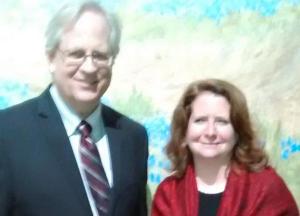By Leah Shaffer
Awards night for the National Association of Science Writers and Council for the Advancement of Science Writing highlighted not only great science writing but the benefits of putting feet to the pavement to find the untold stories.
In the case of Liz Szabo, this year's recipient of the CASW Victor Cohn Prize for Excellence in Medical Science Reporting, her feet were actually hitting the pavement of the Lower Ninth Ward of New Orleans to find people who might be especially vulnerable to future Zika outbreaks. Szabo's story, “Zika could hit people in poverty the hardest,” was among the body of work that earned her the award.Szabo was grateful to her editors at USA Today for giving her the time to do in-depth reporting. Szabo worked the health beat at USA Today for more than decade until she recently switched to Kaiser Health News. She dedicated her award to her editors, almost all of whom have left journalism due to downsizing in the industry.
Szabo was not the only award winner who ventured far from the science desk to find stories. This year's group of NASW Science in Society Journalism Awards winners created stories that took patience and persistence. It took more than a decade for Andrew Nikiforuk to gain the trust of Jessica Ernst, the subject of his book, Slick Water: Fracking and One Insider’s Stand Against the World’s Most Powerful Industry.
“It's really a story about the courage of women,” he said.
Amy Maxmen, winner of the science reporting category, found her story by being on location. The result, “How the Fight Against Ebola Tested a Culture’s Traditions,” was published in National Geographic.
Josh Dzieza had no choice but to follow his sources out in the field because they were commercial beekeepers, constantly on the move. Dzieza, who won in the longform category for “Bees, Inc.,” published in Pacific Standard, was able to find a new angle on the story of dying bees by focusing on the inner workings and history of the beekeeping industry.
Following Hurricane Sandy, Elizabeth Rush ended up focusing on a small group of Staten Islanders who are leaving their homes to Mother Nature. Her story, “Leaving the Sea: Staten Islanders Experiment with Managed Retreat,” published by Urban Omnibus, won the local reporting category.
Emma Marris' “Handle with Care,” commentary, published in Orion, started out as a "rant" to her critics, she joked. But thanks to some helpful editing, it ended being an impassioned example of why we humans need to harness every means necessary to save other species.
Even the most complicated science is enriched by finding the story within. Such is the case with Natalie Wolchover's reporting for Quanta magazine. Wolchover won the CASW Evert Clark/Seth Payne Award for young journalists “for making the principles and people behind these complex stories come alive for her readers,” said CASW President Alan Boyle in presenting her the award.
Links to the entries for the Science in Society Awards winners can be found in the awards announcement. A link to one of Wolchover's winning stories can be found on CASW's Showcase site.




